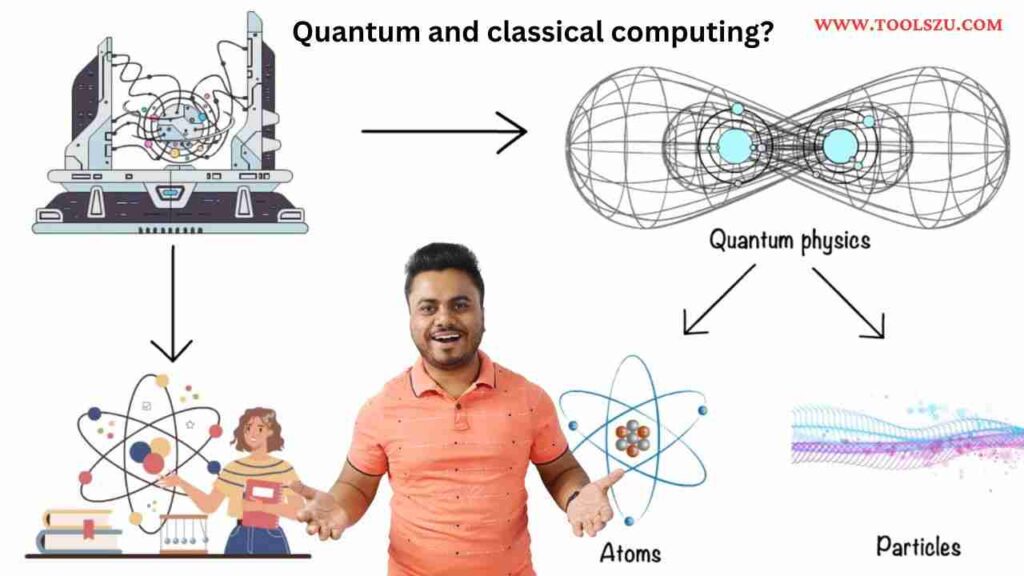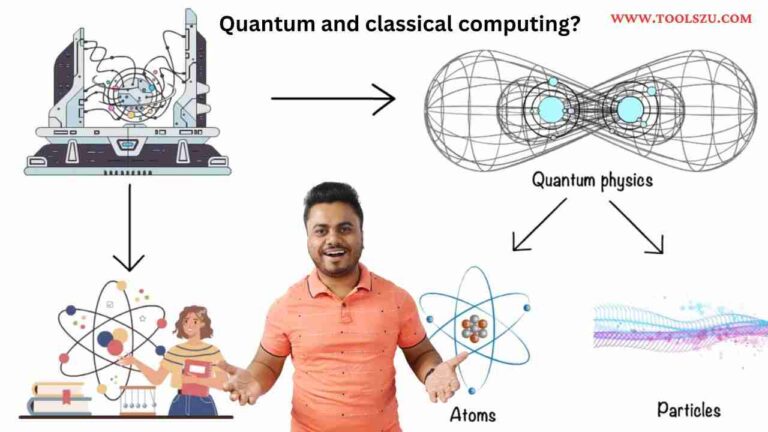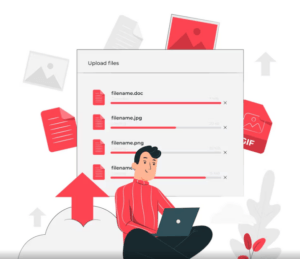Quantum computing differs from classical computing in that it stores and analyses information using quantum bits (qubits), whereas classical computing uses bits (binary digits). Quantum computing exploits quantum physics principles like superposition and entanglement to do complex tasks at incredible speeds and efficiency. Classical computing processes bits of information using classical logic and Boolean algebra.
Some of the significant differences between quantum computing and traditional computing are:
Processing power: Quantum computing can provide exponential speedups for some activities, such as factoring large numbers, simulating quantum systems, and optimising complex systems. The sequential nature of bit operations, as well as actual hardware constraints, limit classical computing.
Problem-solving abilities: Quantum computing may solve problems that are intractable or impossible for traditional computers, such as breaking some encryption systems, inventing innovative materials and medications, and predicting weather and climate. Classical computing can efficiently solve many real-world problems, but it struggles with scenarios involving exponential time or space complexity.
Security and cryptography: Quantum computing has the potential to undermine various existing encryption schemes, like RSA and ECC, which rely on the difficulty of factoring large numbers or determining discrete logarithms. Quantum computing can also enable novel data security approaches, such as quantum cryptography, which uses quantum state and measurement properties.
Programming and infrastructure: Quantum computing requires a different programming paradigm, as well as a unique collection of tools and languages, than traditional computing. Quantum computing faces various scientific and practical challenges, such as maintaining qubit coherence and stability, increasing the number and quality of qubits, and linking to traditional computers.
Quantum computing and classical computing are fundamentally different techniques for information processing, with each having distinct advantages and disadvantages. Quantum computing is not a replacement for traditional computing but rather a complementing technology that can create new possibilities and opportunities in a range of fields and industries. If you want to learn more about quantum computing, I recommend visiting some of the websites I selected for you.

What is the current state of quantum computing research?
Quantum computing research is a rapidly increasing field that tries to develop and improve quantum computers, which store and process data using quantum bits, or qubits. Quantum computers have the potential to solve some of the most complex and difficult problems in science, engineering, cryptography, and artificial intelligence, but they also face a slew of technical and practical challenges, including maintaining qubit coherence and stability, increasing qubit number and quality, and integrating with traditional computers.
According to some of the web search results that I acquired for you, some of the current trends and developments in quantum computing research are:
Quantum computers are getting bigger and more powerful. IBM unveiled Osprey, a 433-qubit machine, last year and intends to build a 100,000-qubit machine within ten years. Google aims to have one million qubits by the end of the decade.
Superconducting circuits, trapped ions, photonic systems, silicon-based devices, and topological qubits are among the platforms and architectures under consideration for quantum computing research.
Developing quantum algorithms and software for a wide range of applications, including machine learning, simulation, cryptography, and error correction.
Creating quantum standards and benchmarks to assess and compare the performance and capabilities of different quantum computers and protocols.
Creating quantum networks and communication systems to enable the safe and reliable transmission and distribution of quantum data and resources.
Also Read : advantages and disadvantages of information technology?
Quantum computing research is still in its early stages, but it is gaining momentum and receiving significant interest and investment from a variety of industries and businesses. Quantum computing is expected to have a significant impact on the future of technology and society, but it will also provide novel challenges and opportunities for creativity and collaboration. If you want to learn more about quantum computing, I recommend visiting some of the websites I selected for you. Increase the precision and accuracy of measurements and sensors.
Could you explain how entanglement works in quantum mechanics?
Entanglement is a phenomenon that occurs when two or more particles are formed, interact, or share physical proximity in such a way that their quantum states cannot be represented independently of one another, even if they are separated by a significant distance. This implies that the particles are in some way connected and can influence one another over space and time.
One approach for making entangled particles is to use a crystal that can divide a photon, a particle of light, into two photons with opposing polarisations. Polarisation refers to the direction of the photon’s electric field, which might be horizontal, vertical, or diagonal. When the crystal splits a photon, the resulting photons become entangled, indicating that their polarisations are entirely connected. For example, if one photon is horizontally polarised, the other must be vertically polarised, and vice versa.
However, before the photons are measured, their polarisations are not fixed but rather exist in a superposition of all possible states. Superposition is another quantum physics phenomenon that allows a particle to exist in numerous states simultaneously until an observation reveals its real state. A photon, for example, can be horizontally and vertically polarised in some cases.
The remarkable component of entanglement is that when one of the entangled photons is measured, its polarisation is picked at random, and the other photon immediately assumes the opposite polarisation, independent of the distance between them. This happens faster than the speed of light, seemingly contradicting the principle of causality, which stipulates that an effect cannot precede its cause. Albert Einstein referred to entanglement as “spooky behaviour at a distance.
The precise mechanism of entanglement is unknown, although some interpretations of quantum physics suggest that the entangled particles share a single wave function, which is a mathematical representation of their quantum states. When one of the particle’s wave functions collapses, the other particle inherits the collapsed state. Another interpretation is that the entangled particles are connected by a hidden variable, which is an unknown component that influences their behavior. Experiments show that the observed correlations between entangled particles cannot be explained by a local hidden variable (²).
Entanglement is an important concept in quantum science and technology because it enables quantum systems to perform tasks that are impossible or impractical for classical systems. Quantum computers, for example, can use entanglement to process several inputs and outputs at the same time, resulting in faster calculations and more complex problem-solving. Quantum cryptography can use entanglement to create secure and unbreakable communication protocols. Quantum metrology can use entanglement to improve the precision and accuracy of measurements and sensors.
Also Read : What is quantum computing and why should you care?




